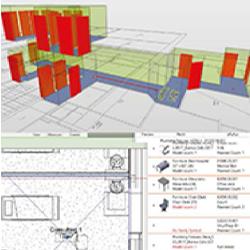
BIM-based tools for automated compliance checking can potentially mitigate some of the negative effects of complexity in healthcare design. The practical adoption of a level of automation in the checking of healthcare design regulations can support achieve transparency and consistency for designers and regulatory bodies.
This research aims to propose recommendations for the adoption of automated checking of regulatory compliance in the design of healthcare facilities. These are developed within a broader context of healthcare design requirements management and modelling. More specifically, the research:
- Focuses on identifying enablers and barriers of using Building Information Modelling (BIM) based tools aligned with process changes for automated compliance checking.
- Aims to contribute towards the adoption of automation and digital methods within healthcare building project contexts.
- Aims to contribute to the categorisation of information regarding building codes and regulations for healthcare projects, as well as other client requirements.
Visit the project website.
Outcomes
There is a need for a hybrid approach to developing healthcare design compliance checking, with automation for objective requirements and semi-automated approaches for subjective requirements. The requirements need to be simplified and streamlined to be better automated, using the proposed taxonomy.
Method
Pilot design, framework development.
Next Steps
There is a need to better understand the links between regulatory and client requirements, to explore the need for subjective requirements and to analyse other regulations according to the proposed taxonomy for further validation.

